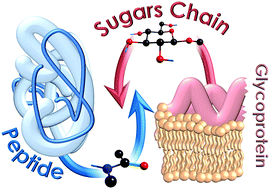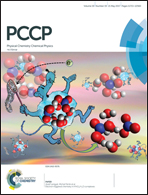Sugar–peptidic bond interactions: spectroscopic characterization of a model system†
Abstract
Sugars are small carbohydrates which play numerous roles in living organisms such as storage of energy or as structural components. Modifications of specific sites within the glycan chain can modulate a carbohydrate's overall biological function as it happens with nucleic acids and proteins. Hence, identifying discrete carbohydrate modifications and understanding their biological effects is essential. A study of such processes requires of a deep knowledge of the interaction mechanism at the molecular level. Here, we use a combination of laser spectroscopy in jets and quantum mechanical calculations to characterize the interaction between phenyl-β-D-glucopyranoside and N-methylacetamide as a model to understand the interaction between a sugar and a peptide bond. The most stable structure of the molecular aggregate shows that the main interaction between the peptide fragment and the sugar proceeds via a C![[double bond, length as m-dash]](https://www.rsc.org/images/entities/char_e001.gif) O⋯H–O2 hydrogen bond. A second conformer was also found, in which the peptide establishes a C
O⋯H–O2 hydrogen bond. A second conformer was also found, in which the peptide establishes a C![[double bond, length as m-dash]](https://www.rsc.org/images/entities/char_e001.gif) O⋯H–O6 hydrogen bond with the hydroxymethyl substituent of the sugar unit. All the conformers present an additional interaction point with the aromatic ring. This particular preference of the peptide for the hydroxyl close to the aromatic ring could explain why glycogenin uses tyrosine in order to convert glucose into glycogen by exposing the O4H hydroxyl group for the other glucoses for the polymerization to take place.
O⋯H–O6 hydrogen bond with the hydroxymethyl substituent of the sugar unit. All the conformers present an additional interaction point with the aromatic ring. This particular preference of the peptide for the hydroxyl close to the aromatic ring could explain why glycogenin uses tyrosine in order to convert glucose into glycogen by exposing the O4H hydroxyl group for the other glucoses for the polymerization to take place.



 Please wait while we load your content...
Please wait while we load your content...